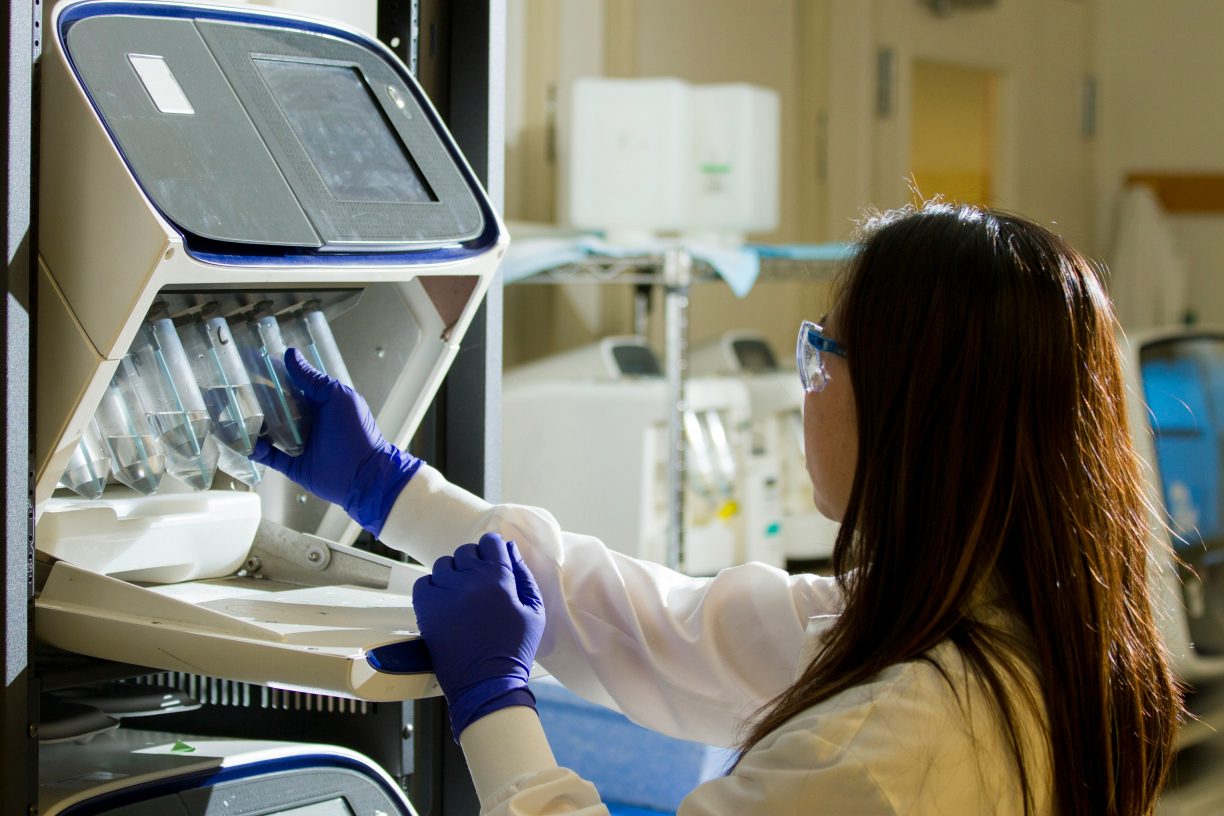Living with a long-term health issue can greatly affect a person’s day-to-day life. Dealing with the pain, limitations, and constant care can feel like a lot to handle. Luckily, progress in science and technology is bringing hope. This article delves into seven solutions that are changing lives and bringing back optimism for those living with long-term health issues.
Cutting-Edge Pain Management Strategies
Effectively managing pain is vital for enhancing quality of life. Recent developments in pain management strategies offer relief for patients. Techniques such as nerve blocks, spinal cord stimulators, and targeted drug delivery systems have shown results.

Photo by Toa Heftiba on Unsplash
For instance, spinal cord stimulators use signals to block pain messages from reaching the brain. This approach has brought relief to individuals dealing with conditions like back pain and neuropathy. It’s not about masking the pain; these methods aim to tackle the root causes, providing lasting solutions and enhancing overall functionality. Furthermore, progress in pain management plans ensures that treatments are customized to fit each person’s requirements and situations. This tailored strategy has demonstrated higher success rates and improved patient contentment. Recognizing and addressing the underlying reasons for discomfort are essential steps toward a life free from chronic pain.
Therapeutic Use of Cannabis
The use of medical marijuana has emerged as a powerful tool in managing long-term health conditions. Studies have shown that medical marijuana can effectively help manage pain, reduce inflammation, and enhance the health of patients with chronic illnesses.
An example of its use is in treating multiple sclerosis, where it aids in easing muscle spasms and discomfort. Patients looking for relief should seek guidance from certified healthcare providers. For instance, visiting a marijuana doctor in Tallahassee ensures that patients receive regulated care tailored to their individual needs. Ongoing research is uncovering additional advantages of medical marijuana, shedding light on its potential to address a wider range of health issues. Patients have shared experiences such as improved sleep, reduced anxiety, and a heightened sense of well-being through the use of medical marijuana. As awareness and acceptance increase, access to this treatment is becoming more accessible for those who require it.
Gene Therapy and Genetic Editing
Advancements in gene therapy and genetic editing stand at the forefront of medical progress. These methods offer hope for curing conditions that were previously untreatable. By modifying or substituting genes, these therapies target the underlying causes of diseases.

Photo by National Cancer Institute on Unsplash
One notable technology, CRISPR, allows for precise alterations to DNA, offering promise for conditions such as cystic fibrosis and muscular dystrophy. Success stories are emerging steadily, indicating the potential of these technologies to transform healthcare. Ongoing research is continuously exploring new avenues, moving us closer to finding cures for a range of ailments at their genetic core. Moreover, gene therapy has displayed potential in addressing certain types of cancer, offering optimism to patients with limited treatment options. As these advancements progress, ethical considerations and thorough testing protocols ensure the safety and effectiveness of these treatments. The future of healthcare appears bright with the evolution of gene therapy and genetic editing methods.
Regenerative Medicine
In the field of regenerative medicine, the focus is on repairing or replacing damaged tissues and organs. Key advancements in this area revolve around stem cell therapy and tissue engineering.
For instance, stem cell therapy has shown promise in addressing conditions like osteoarthritis and heart disease. By introducing healthy stem cells into affected areas, the body can regenerate tissue, alleviating discomfort and enhancing functionality. Similarly, through tissue engineering, breakthroughs such as lab-grown organs have been achieved, offering solutions for patients needing organ transplants. Furthermore, regenerative medicine has made progress in treating spinal cord injuries, providing hope for individuals with paralysis. The potential to restore lost functions and enhance quality of life is substantial. As research advances further, we may witness an array of applications within medicine, across fields encompassing neurology to cardiology.
Wearable Health Technology
The emergence of wearable health technology has transformed the management of chronic conditions dramatically. Wearable devices such as smartwatches, continuous glucose monitors, and fitness trackers are tools that offer real-time health information, empowering individuals to manage their well-being.
These gadgets keep tabs on health indicators, monitor activity levels, and provide valuable insights for managing conditions like diabetes, high blood pressure, and heart ailments. Users have expressed positive feedback about these devices, noting improved health outcomes and a greater sense of control over their health conditions. Moreover, wearable technology can alert users to potential health issues in advance, enabling proactive management of their well-being. Integration with mobile applications allows users to easily share data with healthcare professionals for continuous monitoring and timely interventions. As technology progresses, wearables are becoming more precise and user-friendly, making them more effective in managing chronic diseases.
The Rise of Telemedicine and Remote Monitoring
 Telemedicine has experienced significant growth in recent times, particularly following the COVID-19 pandemic. It offers an efficient way for patients to access care from the comfort of their homes. For individuals dealing with chronic illnesses, remote monitoring devices play a crucial role in transmitting health data to healthcare providers for ongoing monitoring and prompt interventions.
Telemedicine has experienced significant growth in recent times, particularly following the COVID-19 pandemic. It offers an efficient way for patients to access care from the comfort of their homes. For individuals dealing with chronic illnesses, remote monitoring devices play a crucial role in transmitting health data to healthcare providers for ongoing monitoring and prompt interventions.
For instance, patients struggling with heart failure can benefit from remote monitoring devices that track heart function and promptly notify healthcare providers about any notable changes. This method ensures that patients get timely treatment, which decreases hospital visits and enhances health outcomes. Additionally, telemedicine eases the pressure on healthcare systems by enabling providers to handle more patients remotely. It also provides flexibility for patients to schedule appointments at their convenience. With the increasing adoption of telemedicine, it is revolutionizing how chronic conditions are handled, making healthcare more accessible and effective.
Psychological and Behavioral Therapy
Chronic illnesses often impact mental well-being. Psychological and behavioral therapies play a crucial role in managing these conditions. Approaches like cognitive-behavioral therapy (CBT) assist patients in dealing with the psychological struggles of living with a chronic illness.
Innovative treatments like virtual reality therapy and mindfulness-based stress reduction have shown potential as well. These therapies aid in reducing anxiety, boosting mood, and improving overall well-being, offering a holistic strategy for managing chronic conditions. Furthermore, support groups and counseling can provide emotional support and reduce feelings of isolation among patients. Addressing mental health alongside physical health is crucial for a holistic approach to managing chronic diseases. By promoting a positive attitude, patients can better navigate the challenges posed by their condition while maintaining a higher quality of life.
Conclusion
In summary, coping with a long-term health issue presents significant difficulties, but progress in innovation brings a sense of optimism. Modern pain relief methods, along with the possibilities of gene therapy and regenerative medicine, are making a substantial impact on individuals’ well-being.
Read more health and wellness articles at ClichéMag.com
Images provided by Deposit Photos, BingAI, Adobe Stock, Unsplash, Pexels, Pixabay & Creative Commons





